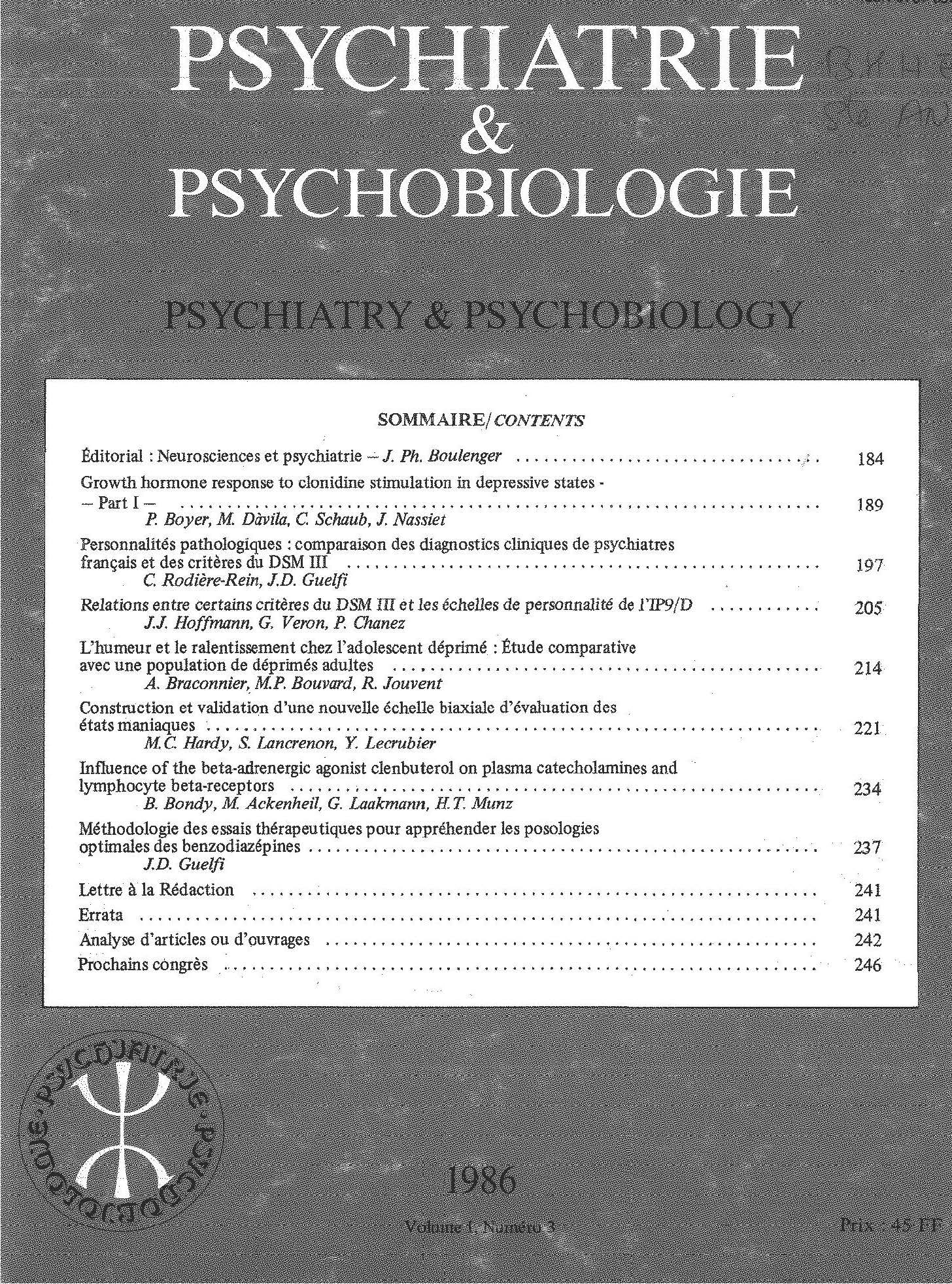No CrossRef data available.
Article contents
Schizophrénie: l’hypothèse dopaminergique à l’épreuve de la génétique moléculaire. I.
Published online by Cambridge University Press: 28 April 2020
Résumé
L’essor de la génétique moléculaire renouvelle l’intérêt pour les études de linkage dans les maladies mentales et devrait nous permettre d’identifier dans le futur les séquences de DNA prédisposant à des phénotypes anormaux. Dans cet article, nous allons d’abord rappeler les principales données obtenues par la génétique classique concernant la schizophrénie, puis nous décrirons une des stratégies de recherche actuellement utilisée: la méthode des gènes candidats. L’emploi de cette méthode nécessite des hypothèses physiopathologiques précises sur l’étiologie de la maladie. Nous serons donc amenès à discuter l’hypothèse d’un dérèglement de la transmission dopaminergique.
Dans un second article à paraître dans un prochain numéro de «Psychiatrie & Psychobiologie» nous étudierons plus en détail les facteurs régulant cette transmission dopaminergique et nous tenterons de définir en fonction des connaissances actuelles les gènes potentiellement mutés.
Summary
The development of molecular genetics has brought a new interest in linkage analysis in mental diseases and should enable the identification of DNA sequences with a predisposition to abnormal phenotypes. In this paper we first recall basic data from classical genetic studies on schizophrenia.
If there appears to be a familial aggregation of the disease, lack of mendelian proportion in transmission, contradictory results in segregation analysis, methodological difficulties in adoption studies, do not allow one to conclude that it is explicitly of genetic origin. Howewer, data are compatible with such a hypothesis.
Today, the interest in linkage studies is renewed by the use of RFLP (restriction fragment length polyporphisms). We describe a strategy based on the “candidate genes” method. This approach has an advantage in its use of random fragments but does not resolve questions regarding heterogeneity and incomplete penetrance. morever, this strategy assumes that there is a precise hypothesis concerning disease etiology. The existence of a dopaminergic transmission disturbance is discussed, with particular emphasis on a bipolar theory, which includes positive and negative symptoms.
In a further paper, we shall study in detail the factors regulating this dopaminergic transmission, in order to define potential mutated genes.
Keywords
- Type
- Article original
- Information
- Copyright
- Copyright © European Psychiatric Association 1988



Comments
No Comments have been published for this article.